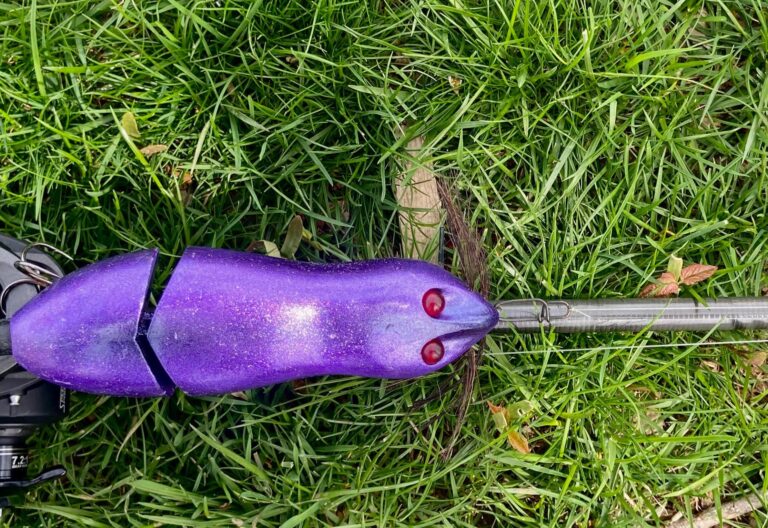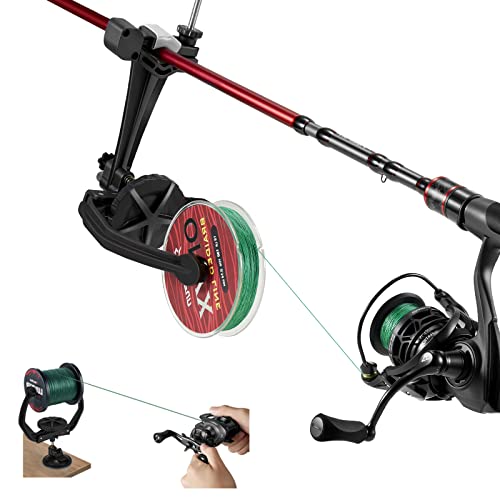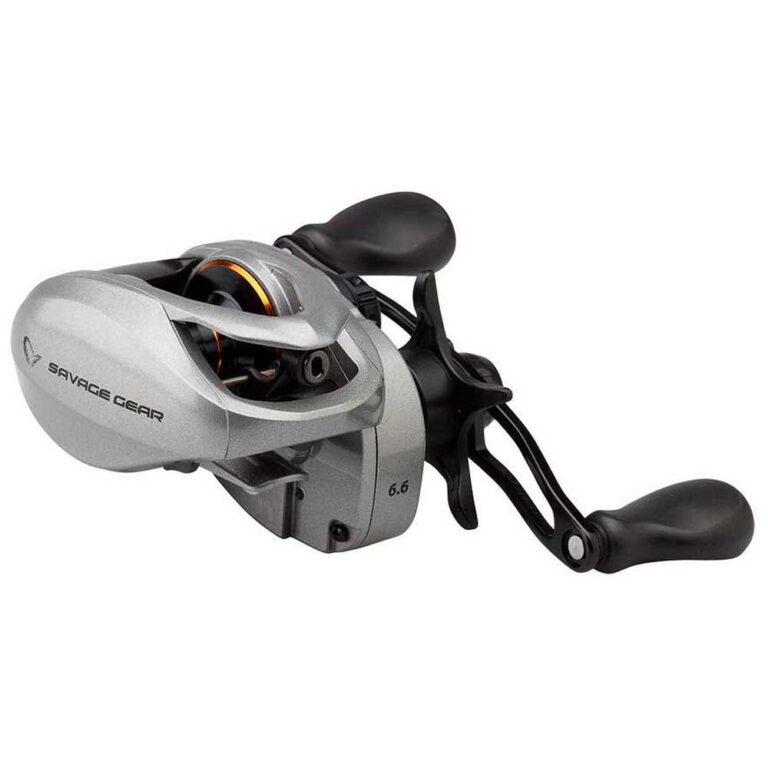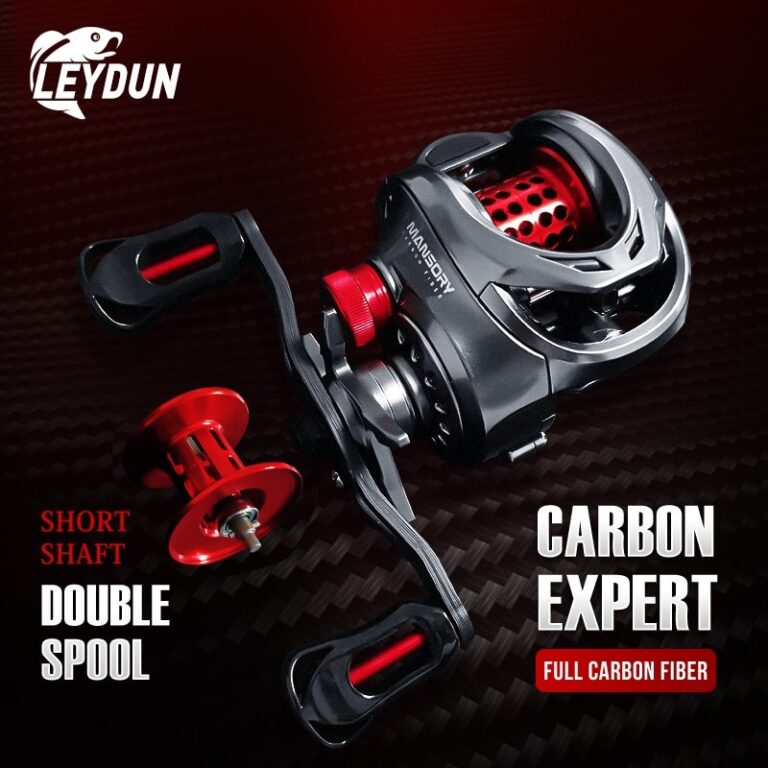The best kind of line for a baitcaster is a braided line. It offers excellent strength and sensitivity, allowing for accurate casting and better control of your bait.
A baitcaster is a type of fishing reel that is commonly used for casting heavier baits and lures. Choosing the right line for your baitcaster is crucial to achieve optimal performance. One of the best options is a braided line, which is made up of multiple strands of fibers woven together.
This type of line offers several advantages over other options. Firstly, it provides excellent strength and durability, making it ideal for handling larger fish and fishing in heavy cover. Secondly, a braided line has little to no stretch, ensuring better sensitivity and more precise control over your bait. Additionally, it has a smaller diameter compared to other lines of the same strength, allowing for longer casts. Overall, a braided line is the best choice for a baitcaster, enhancing your fishing experience and increasing your chances of success.
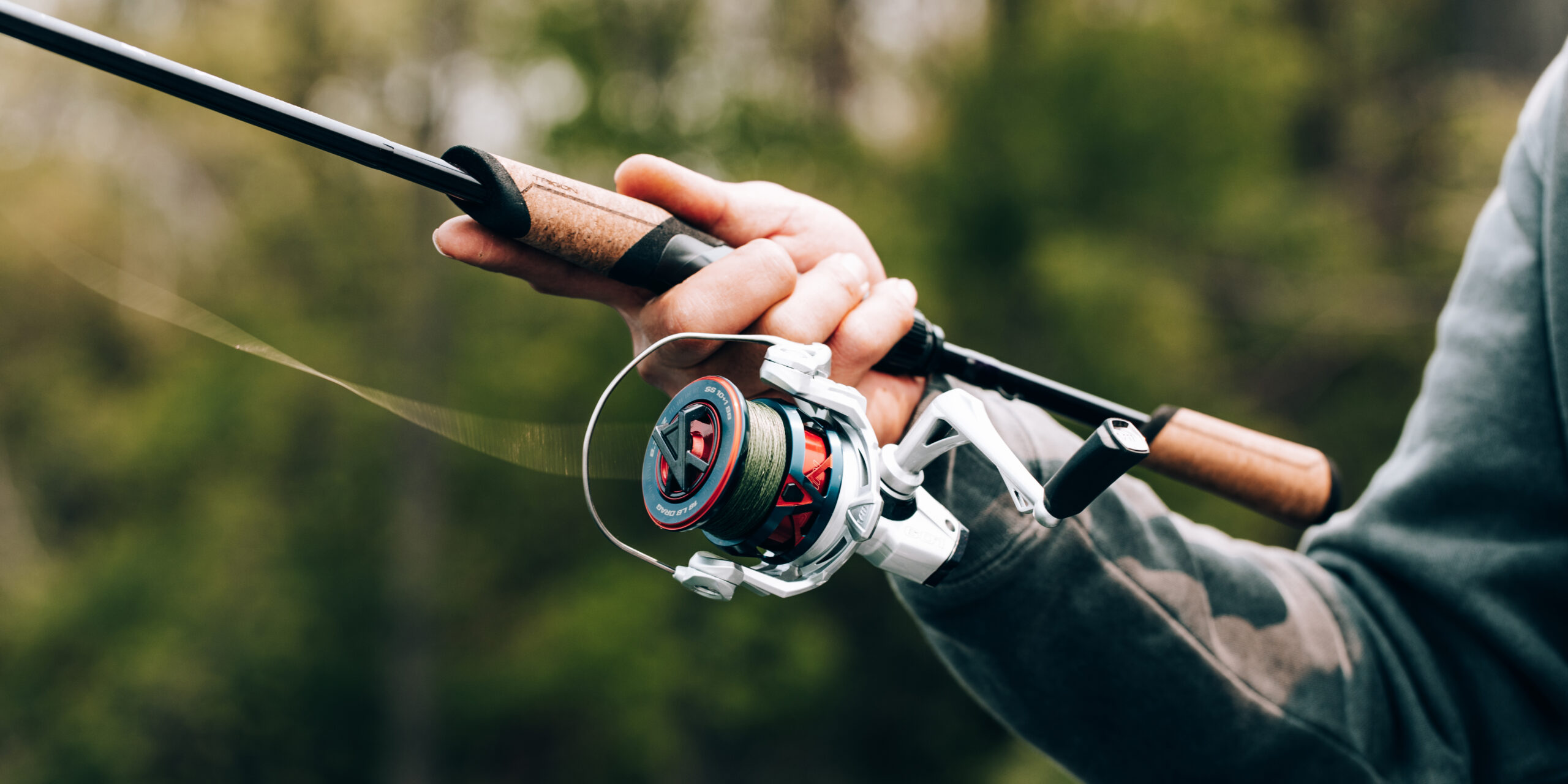
Credit: majorleaguefishing.com
How Baitcasters Differ From Other Fishing Reels
Baitcasters are popular fishing reels known for their precision and casting distance. Unlike other fishing reels, baitcasters offer unique features and components that make them stand out among anglers. Understanding the key differences between baitcasters and other reels is essential for maximizing your fishing experience.
In this section, we will explore the advantages of using a baitcaster, the key features and components of a baitcaster, and why line selection is crucial for baitcasters.
Advantages Of Using A Baitcaster:
- Increased casting distance: Baitcasters are designed for long-distance casting, allowing you to target hard-to-reach areas and cover a larger fishing ground.
- Better control and accuracy: Baitcasters offer greater control and accuracy, enabling you to place your bait precisely where you want it and effectively target specific fish species.
- Versatile for different fishing techniques: Baitcasters are suitable for various fishing techniques such as flipping, pitching, and casting a wide range of lures. They provide the flexibility needed for different fishing situations and angling styles.
- More power for handling bigger fish: Baitcasters are built with robust construction and stronger gears, allowing you to handle larger and more aggressive fish species without straining the reel.
- Sensitive and responsive: Baitcasters provide better sensitivity and responsiveness, allowing you to detect even the slightest bites and make quick adjustments to hook your target fish.
Key Features And Components Of A Baitcaster:
- Spool: The spool of a baitcaster is positioned perpendicularly to the fishing rod, which creates a rotational casting motion when the line is released. The spool is directly connected to the reel handle and provides controlled line release during casting.
- Brake system: Baitcasters feature a brake system that helps control the speed of the spool during casting. It prevents backlash or “bird’s nest” tangles, providing a smooth and controlled casting experience.
- Gear ratio: Baitcasters offer various gear ratios, indicating the number of spool rotations for each handle turn. Higher gear ratios provide faster retrieve speed, while lower ratios offer more power for handling larger fish.
- Drag system: The drag system of a baitcaster allows you to control the amount of resistance applied to the line when a fish is hooked. It ensures a smooth and consistent fight with the fish, preventing line breakage.
- Handle: Baitcasters typically have a double-paddle or single crank handle, providing a comfortable grip and smooth operation. Some reels offer adjustable handle positions to accommodate different preferences.
Why Line Selection Is Crucial For Baitcasters:
- Casting performance: The type and weight of the fishing line used in a baitcaster significantly impact casting distance and accuracy. The right line selection ensures optimal performance and minimizes casting issues like backlash.
- Strength and durability: Baitcasters are designed to handle heavier lines, making them suitable for targeting larger fish. Choosing a line with adequate strength and durability is essential to withstand the stress of casting and fighting fish.
- Line sensitivity: Baitcasters excel in providing excellent sensitivity to detect subtle bites. Opting for a low-stretch and sensitive line helps transmit even the slightest fish movements to the angler, resulting in more successful hooksets.
- Line visibility: The visibility of the fishing line can affect your fishing success. Selecting a line color that blends with the water or stands out against different backgrounds enhances your ability to detect line movement and visually track your bait.
- Fishing conditions: Considering the fishing conditions such as water clarity, structure, and target species is crucial in choosing the appropriate line for your baitcaster. Factors like monofilament, fluorocarbon, or braided lines play a role in maximizing your chances of a successful catch.
Understanding how baitcasters differ from other fishing reels is essential to make an informed decision when selecting your fishing gear. Baitcasters offer numerous advantages in terms of casting, control, power, and responsiveness. The key features and components of a baitcaster contribute to their unique performance.
Moreover, selecting the right fishing line is crucial for optimizing the performance of your baitcaster and increasing your chances of a rewarding fishing experience.
Factors To Consider When Choosing The Best Line For A Baitcaster
When it comes to choosing the best fishing line for your baitcaster, there are several factors to consider. The line weight, type, strength, durability, and flexibility all play a crucial role in determining the overall performance and success of your fishing experience.
Let’s dive into each of these factors in more detail:
The Importance Of Matching Line Weight To The Baitcaster’S Specifications
Matching the line weight to the specifications of your baitcaster is essential for optimal performance. Here are some key points to keep in mind:
- Ensure that the line weight is within the recommended range provided by the baitcaster manufacturer. Using a line that is too heavy or too light can negatively affect the casting distance and accuracy.
- Consider the type of fishing you’ll be doing and the size of the fish you’re targeting. Lighter lines are suitable for smaller fish and finesse techniques, while heavier lines are better for larger, more aggressive species.
- Keep in mind the line capacity of your baitcaster’s spool. A thicker line will take up more space, decreasing the amount of line you can have on your reel.
Different Types Of Fishing Lines And Their Characteristics
There are various types of fishing lines available, each with its own unique characteristics. Understanding these differences can help you make an informed decision. Here are some key points to consider:
- Monofilament lines are versatile, affordable, and suitable for a wide range of fishing applications. They have good knot strength, buoyancy, and manageability.
- Fluorocarbon lines are nearly invisible underwater, making them ideal for situations where fish are extra cautious. They have low stretch and high sensitivity, allowing for better bite detection.
- Braided lines are extremely strong and provide excellent sensitivity. They have minimal stretch and are suitable for heavy cover fishing or situations where strength and durability are crucial.
Considerations For Line Strength, Durability, And Flexibility
Apart from line type, other factors such as strength, durability, and flexibility also play a significant role in deciding the best line for your baitcaster. Here are some key points to take into account:
- Consider the breaking strength of the line. It should match the size of the fish you’re targeting and the conditions you’ll be fishing in. A higher breaking strength is preferable when targeting larger, more aggressive species.
- Look for a line that offers good abrasion resistance to withstand rough underwater structures or rocky terrains. This will help reduce line breakage and prolong the life of the line.
- Flexibility is crucial for achieving better casting distance and accuracy. A line with too much memory can result in backlash and tangles. Opt for a line that is supple and casts smoothly.
Remember, choosing the best line for your baitcaster requires careful consideration of various factors. By matching the line weight to the baitcaster’s specifications, understanding the different types of fishing lines and their characteristics, and considering line strength, durability, and flexibility, you can maximize your chances of success on your next fishing trip.
Happy angling!
Expert Recommendations For Selecting The Best Line For A Baitcaster
Selecting the best line for a baitcaster can make a significant difference in your fishing success. With various options available, it’s important to understand the pros, cons, and recommended scenarios for each type of line. In this section, we’ll provide expert recommendations to help you make an informed decision.
Let’s dive in!
Monofilament Lines: Pros, Cons, And Recommended Scenarios
- Versatile: Monofilament lines are suitable for a wide range of fishing techniques, including casting, trolling, and spinning.
- Good shock absorption: The stretchiness of monofilament lines allows them to absorb the shock of sudden fish strikes, reducing the risk of line breakage.
- Affordable: Monofilament lines are generally more budget-friendly compared to other options.
- Recommended scenarios: Monofilament lines work well in clear water or situations where stealth is not a priority. They are also great for beginners due to their forgiving nature and ease of use.
Fluorocarbon Lines: Pros, Cons, And Recommended Scenarios
- High strength and sensitivity: Fluorocarbon lines have excellent tensile strength and sensitivity, allowing anglers to detect even subtle bites.
- Invisibility underwater: Due to their refractive index, fluorocarbon lines are nearly invisible underwater, making them ideal for clear and heavily pressured waters.
- Abrasion resistance: Fluorocarbon lines are highly resistant to abrasion, minimizing the risk of line damage when fishing in structure-rich areas.
- Recommended scenarios: Use fluorocarbon lines when fishing in clear water, targeting line-shy fish species, or fishing in areas with lots of underwater vegetation or cover.
Braided Lines: Pros, Cons, And Recommended Scenarios
- Exceptional strength: Braided lines are known for their incredible strength-to-diameter ratio, allowing anglers to use a thinner line without compromising on strength.
- Near-zero stretch: With very little stretch, braided lines offer excellent sensitivity and improved hook-setting power.
- High visibility: Braided lines come in various vibrant colors, making it easier to track the line and detect subtle line movements.
- Recommended scenarios: Braided lines are great for fishing heavy cover, deep-water applications, or when targeting large, hard-fighting fish species.
Hybrid Lines: Pros, Cons, And Recommended Scenarios
- Combines the best of both worlds: Hybrid lines usually consist of a combination of materials, such as fluorocarbon and nylon, offering the benefits of both lines in one.
- Improved manageability: Hybrid lines are generally easier to handle and have reduced memory compared to pure fluorocarbon lines.
- Enhanced sensitivity: The fluorocarbon component of hybrid lines provides increased sensitivity for detecting bites.
- Recommended scenarios: Hybrid lines are ideal for situations where you need the invisibility of fluorocarbon combined with the manageability and reduced memory of nylon.
Factors To Consider When Selecting Line Color
- Water clarity: Choose a line color that blends well with the water you’ll be fishing in. For clear water, opt for lighter shades like clear or low-visibility green. In stained water, darker shades like moss green or smoke work best.
- Visibility: Consider line visibility based on your preference. If you prefer to see subtle line movements, choose a more visible color like high-visibility yellow or red. For a stealthy approach, select a low-visibility color.
- Fishing conditions: Different line colors work better in certain weather conditions. On sunny days, a high-visibility color can be advantageous, while a low-visibility color may be better for overcast conditions.
- Target species: Some fish have color preferences and may be more attracted to or wary of certain line colors. Research the preferences of your target species to make an informed choice.
Remember, the type of line you choose for your baitcaster will depend on various factors, including fishing conditions, target species, and personal preferences. Consider the pros, cons, and recommended scenarios we’ve discussed to make the best decision for your fishing needs.
Happy fishing!
Testing And Comparing Different Lines For Baitcasters
Baitcasters are popular among anglers for their ability to cast with precision and accuracy. However, choosing the right line for a baitcaster can greatly impact its performance. In this section, we will dive into the important factors to consider when testing and comparing different lines for baitcasters.
Evaluating Casting Distance And Accuracy:
- The diameter and weight of the line play a crucial role in determining casting distance. Thinner lines generally offer greater casting distance due to reduced friction in the air.
- Lines with low memory and high flexibility tend to offer better accuracy as they are easier to control during a cast.
- Some lines may have additional features, such as special coatings or treatments, which can further enhance casting distance and accuracy.
Assessing Line Sensitivity And Visibility:
- Sensitivity refers to the ability of the line to transmit vibrations from a fish biting or other underwater activity. A sensitive line allows anglers to detect subtle movements, improving their chances of hooking a fish.
- Visibility is another important aspect, especially when fishing in clear water or low light conditions. Lines with high visibility colors, like fluorescent green or yellow, can help anglers track their line and detect any movements.
Examining Line Longevity And Resistance To Abrasion:
- The durability of the line is crucial to withstand the wear and tear of fishing. Lines with high abrasion resistance are more durable and less likely to break when rubbing against rocks, debris, or fish teeth.
- Factors like the material used, construction, and coatings can greatly influence the line’s durability. It’s important to choose a line that can handle the specific fishing conditions you’ll be facing.
Considering The Impact Of Weather Conditions On Line Performance:
- Different lines may perform differently in various weather conditions. For example, some lines may become stiffer in cold weather, affecting their casting and sensitivity.
- Lines with good resistance to uv rays are preferred for fishing in hot and sunny conditions as they have a longer lifespan.
- Rain can also affect line performance, with some lines being more resistant to water absorption and maintaining their strength when wet.
Testing and comparing different lines for baitcasters involves evaluating casting distance and accuracy, assessing line sensitivity and visibility, examining line longevity and resistance to abrasion, and considering the impact of weather conditions. By finding the optimal line that meets your specific fishing needs, you can enhance your baitcaster’s performance and improve your overall fishing experience.
Maintaining And Caring For Baitcaster Lines
Baitcaster lines are essential components of your fishing setup, and proper maintenance and care can significantly impact your fishing success. By following a few key practices, you can ensure that your lines stay in prime condition, preventing tangling, damage, and other issues that can hinder your angling experience.
Here are some important tips for maintaining and caring for your baitcaster lines:
Proper Line Storage Techniques To Prevent Tangling And Damage
- Store your baitcaster lines in a cool, dry place away from direct sunlight, as exposure to heat and uv rays can weaken the line.
- Consider using line spools or line holders specifically designed for baitcaster lines to prevent tangling and ensure easy access.
- Avoid overfilling your reel spool, as this can lead to line twisting and tangles during casting and retrieval.
Regular Cleaning And Inspection Of Lines For Wear And Tear
- After each fishing trip, gently clean your baitcaster lines with a soft cloth or sponge to remove any debris or dirt that may accumulate.
- Inspect the entire length of the line for any signs of wear, such as fraying, nicks, or significant abrasions. If you notice any damage, replace the line before your next fishing outing.
- Consider soaking your baitcaster lines in a mild line cleaning solution or lukewarm, soapy water on occasion to remove any stubborn grime or buildup.
Tips For Handling Backlash And Avoiding Line Twists During Fishing
- Practice proper thumb control to minimize backlash, which occurs when the spool rotates faster than the line exits during casting. Gradually release the line with your thumb to maintain control and prevent tangles.
- Avoid sudden, forceful casting motions that can lead to line twists. Instead, use smooth and controlled casting techniques.
- Occasionally check for line twists by extending the line and allowing it to spin freely. If you notice twists, consider using a swivel or performing an overhead casting technique to untwist the line.
By implementing these maintenance and care strategies for your baitcaster lines, you can ensure their longevity and optimal performance. Remember to store them properly, clean and inspect them regularly, and employ effective techniques to handle backlash and prevent line twists.
With well-maintained baitcaster lines, you’ll be ready to tackle any fishing adventure with confidence and efficiency. Happy fishing!
Expert Advice On Line Handling Techniques For Baitcasters
Baitcasters are popular among experienced anglers due to their ability to cast longer distances and provide better accuracy. However, to truly optimize your baitcaster’s performance, it’s crucial to use the right line and handle it properly. In this section, we will provide expert advice on re-spooling baitcaster lines correctly, adjusting line tension and drag settings, and preventing and dealing with line snags and tangles.
Re-Spooling Baitcaster Lines Correctly For Optimal Performance
When it comes to re-spooling your baitcaster line, following the correct technique is essential to ensure optimal performance. Consider the following key points:
- Use quality fishing line: Invest in a high-quality fishing line that suits your fishing needs and the type of fish you are targeting. This will help reduce line memory and increase casting efficiency.
- Check line compatibility: Before re-spooling, ensure that the line is compatible with your baitcaster and its recommended line weight and strength range.
- Spool tension: When re-spooling, apply consistent tension on the fishing line to prevent loose or tight winding. This can be achieved by using a pencil or a specialized line tensioning accessory.
Correctly Adjusting The Line Tension And Drag Settings
To get the most out of your baitcaster, it’s crucial to understand how to adjust the line tension and drag settings properly. Consider the following key points:
- Line tension adjustment: Begin by loosening the tension knob on the side of the reel. Next, tie your bait or lure to the line and set your rod at a 45-degree angle. Slowly tighten the tension knob until the bait falls slowly and smoothly to the ground without any backlash.
- Drag settings: The drag system on a baitcaster controls the amount of resistance when a fish pulls the line. Adjust the drag to a level that allows the line to be pulled out smoothly without breaking but still provides enough resistance to tire the fish.
Techniques For Preventing And Dealing With Line Snags And Tangles
Line snags and tangles can be frustrating and time-consuming. However, with the right techniques, you can prevent and deal with these issues effectively. Consider the following key points:
- Proper casting technique: Avoid making sudden, jerky movements during casting, as this can cause backlash and tangles. Practice a smooth casting motion to minimize the chances of snags.
- Regularly check for line twists: Line twists can lead to tangles. After re-spooling, ensure that your line is coming off the spool smoothly to prevent twisting. If you notice line twisting during fishing, pause and allow the lure to twist out freely before continuing.
- Dealing with tangles: If you encounter a tangle, resist the urge to yank the line forcefully. Instead, gently pull out the loops and use your fingers to untangle the mess. If the tangle is severe, consider cutting the line above the tangle and retying your bait or lure.
By following these expert-approved line handling techniques, you can enhance your baitcaster performance and enjoy a more successful and enjoyable fishing experience. Remember to choose the right line, adjust the tension and drag settings correctly, and employ preventive measures to avoid and address snags and tangles.
Happy fishing!
Conclusion
After considering the various options for baitcaster fishing lines, it is clear that there is no one-size-fits-all answer to the question of which line is best. Each angler will have different needs and preferences based on their fishing style and target species.
However, there are a few key factors to keep in mind when choosing a line for a baitcaster. Firstly, the line’s strength and durability are crucial. Whether you opt for monofilament, fluorocarbon, or braided line, you’ll want a line that can withstand the pressure of casting and reeling in fish without breaking or fraying.
Secondly, consider the line’s visibility in the water. If you’re fishing in clear water, a low-visibility line like fluorocarbon can be advantageous. On the other hand, if you’re fishing in murky or stained water, a higher visibility line may be better for detecting strikes.
Lastly, choose a line that matches the technique and lure you’ll be using. Different techniques require different line characteristics, such as sensitivity for finesse techniques or abrasion resistance for fishing in heavy cover. Overall, the best line for a baitcaster will depend on your individual needs and preferences.
Try experimenting with different options to find the line that works best for you and your fishing style. Happy fishing!

